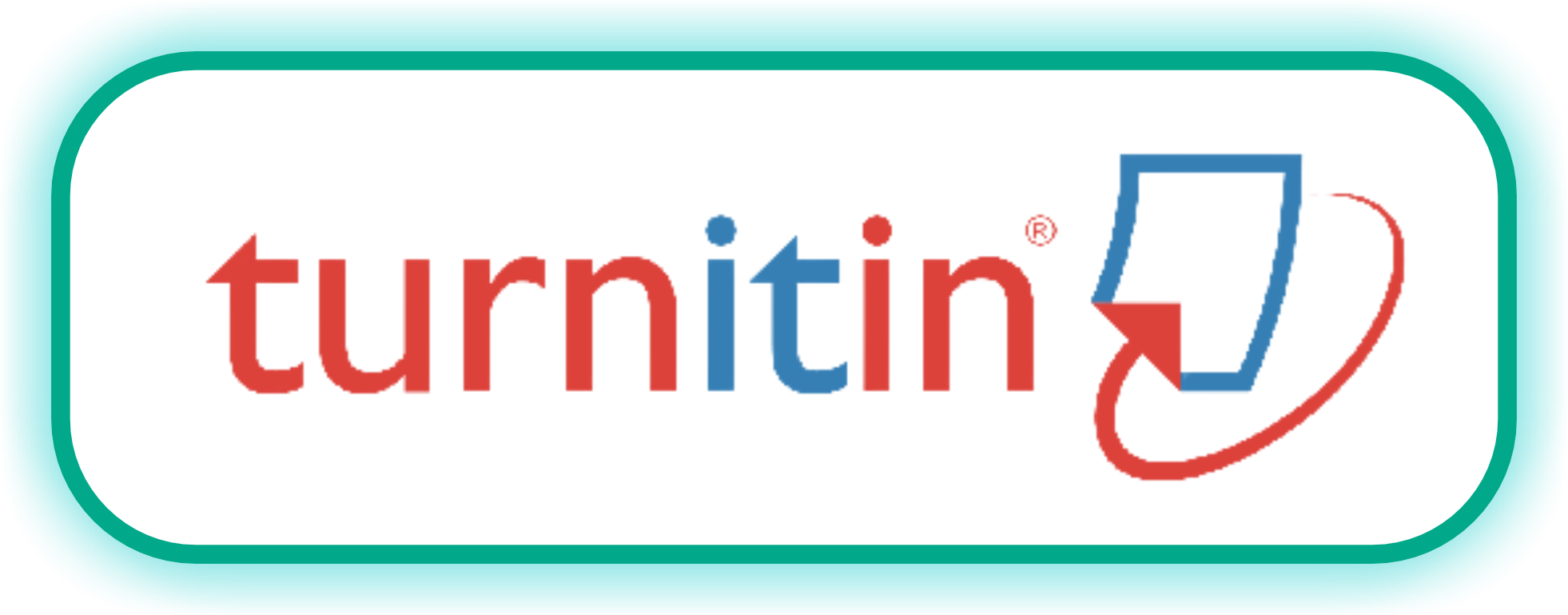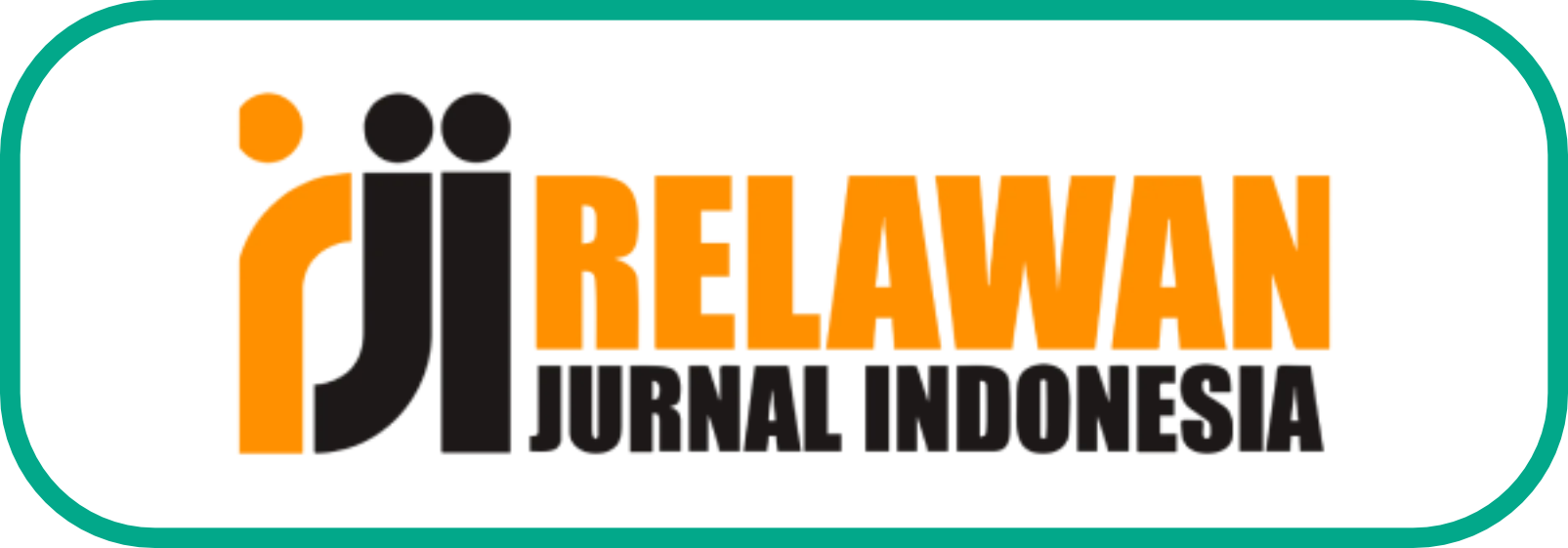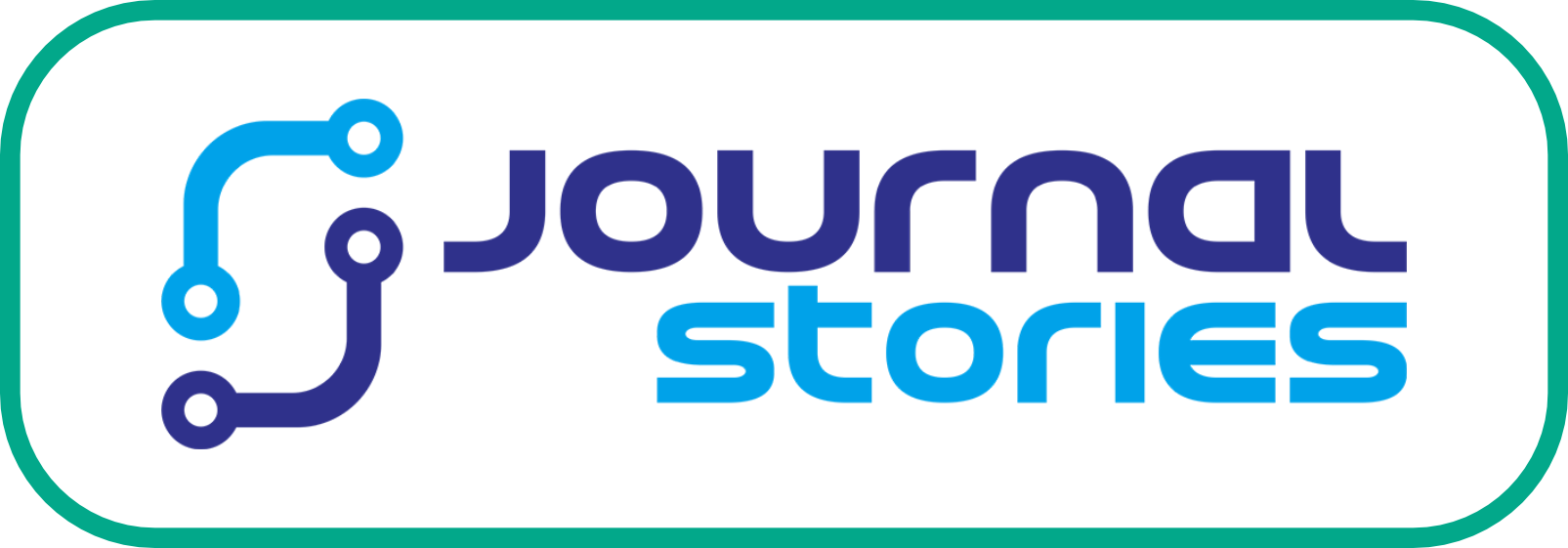HUBUNGAN DOWN SYNDROME DENGAN TERJADINYA KARIES GIGI: SCOPING REVIEW
Sari
Down syndrome merupakan kelainan genetik yang berasal dari kelainan kromosom 21 yang paling sering menyebabkan disabilitas intelektual. Disabilitas intelektual yang terjadi menyebabkan keterbatasan dalam adopsi perilaku sehingga masalah kesehatan gigi dan mulut tak dapat dihindari salah satunya karies gigi. Tujuan penelitian ini adalah untuk mengkaji hubungan down syndrome dengan terjadinya karies gigi, prevalensi karies gigi pada penderita down syndrome dan komposisi saliva pada penderita down syndrome terhadap kejadian karies gigi. Jenis penelitian berupa studi pustaka dan bentuk Scoping Review. Pencarian artikel dilakukan pada database PubMed, Science Direct, dan Taylor and Francis Online. Setelah dilakukan dilakukan seleksi artikel sesuai dengan topik. Hasil penelitian didapatkan bahwa down syndrome memiliki hubungan terhadap peningkatan dan penurunan kejadian karies gigi dengan keterlibatan faktor-faktor tertentu. Peningkatan kejadian karies gigi berkaitan dengan faktor disabilitas perilaku, hipotonus otot wajah, usia, sosial ekonomi keluarga yang rendah, kurang fluoridasi, konsumsi sukrosa tinggi, dan kurangnya tindakan preventif. Penurunan kejadian karies gigi berkaitan dengan keterlambatan erupsi, oligodontia kengenital, sosial ekonomi keluarga yang tinggi, perbedan komposisi saliva dan perbedaan komposisi mikroba saliva. Perbedaan komposisi saliva yaitu pada pH, IgA, laju alir dan kadar elektrolit yang lebih tinggi serta komposisi mikroba yaitu Streptococcus mutans yang lebih rendah. Kesimpulan diperoleh bahwa terdapat hubungan antara down syndrome terhadap peningkatan dan penurunan kejadian karies gigi, serta ditemukan komposisi dan kepadatan mikroba saliva yang berbeda pada penderita down syndrome yang berkaitan dengan penurunan kejadian karies gigi.
Kata Kunci: Down Syndrome, Trisomy 21, Dental Caries, Dental Decay
Teks Lengkap:
PDFReferensi
Achmad, H., Eka, D. K., Wijaya, S. (2012). Prevalance of dental caries and anterior teeth
malrelatiom to children with Down’s syndrome in Makassar. Dentofacial, 11 no. 2, 69–74.
Al-Maweri, S., & Al-Sufyani, G. (2014). Dental caries and treatment needs of Yemeni
children with down syndrome. Dental Research Journal, 11(6), 631–635. http://www.ncbi.nlm.nih.gov/pubmed/25540656%0Ahttp://www.pubmed central.nih.gov/articlerender.fcgi?arti d=PMC4275630.
AlSarheed, M. (2015). A comparative study of oral health amongst trisomy 21 children living in
Riyadh, Saudi Arabia: Part 1 caries, malocclusion, trauma. Saudi Dental Journal, 27(4),
–223. https://doi.org/10.1016/j.sdentj.2015.03.003
Annissa, S., & Nurcandra, F. (2018). Pola Konsumsi Makanan Kariogenik , Kebiasaan Menggosok
Gigi , dan Karies pada Anak Usia Sekolah di SDN Cipedak 02 Jakarta Selatan Cariogenic Food Consumption , Tooth Brushing Habits Effect , and Caries in School-Age Children in Cipedak 02 SDN South Jakart. Jurnal Ilmiah Kesehatan Masyarakat Vol.1 Edisi 2, 2019, 11, 159–165.
Areias, C., Sampaio-Maia, B., Pereira, M. de L., Azevedo, Á., Melo, P., Andrade, C., &
Scully, C. (2012). Reduced salivary flow and colonization by mutans streptococci in children with Downsyndrome. Clinics, 67(9), 1007–1011. https://doi.org/10.6061/clinics/2012(09)04.
Azhar, N. F., Riyanti, E., & Musnamirwan, I. A. (2012). The prevalence of caries, def-t, and
DMF-T index of children with Down Syndrome aged 6-14 years old. Padjadjaran Journal of Dentistry, 24(1).https://doi.org/10.24198/pjd.vol24no1.15380.
Balaji, K., Milne, T. J., Drummond, B. K., Cullinan, M. P., & Coates, D. E. (2016). A comparison
of salivary IgA in children with Down syndrome and their family members. Archives of Oral Biology, 67, 39–45. https://doi.org/10.1016/j.archoralbio. 2016.03.005.
Brignardello-Petersen, R. (2020). Children and adolescents with Down syndrome seem
to have a lower prevalence of caries experience than those without Down syndrome. Journal of the American Dental Association, 151(11), e103. https://doi.org/10.1016/j.adaj.2020.06.036.
Deps, T. D., Angelo, G. L., Martins, C. C., Paiva, S. M., Pordeus, I. A., & Borges-Oliveira,
A. C. (2015). Association between dental caries and down syndrome: A systematic review and meta-analysis. Journal PLOS One, 10(6), 1–11. https://doi.org/10.1371/journal.pone. 0127484.
Domingues, N. B., Mariusso, M. R., Tanaka, M. H., Scarel-Caminaga, R. M., Mayer, M.
P. A., Brighenti, F. L., Zuanon, Â. C. C., Ibuki, F. K., Nogueira, F. N., & Giro, E. M. A. (2017). Reduced salivary flow rate and high levels of oxidative stress in whole saliva of children with Down syndrome. Special Care in Dentistry, 37(6), 269–276. https://doi.org/10.1111/scd.12258.
Fick DM. Aging and Disabilities: How to Age Well With Down Syndrome and Leave No One
Behind. J Gerontol Nurs. 2019 May 1;45(5):2-4. doi: 0.3928/00989134-20190410-01. PMID: 31026325.
Gao, X., Jiang, S., Koh, D., and Hsu, C.Y.S. (2016). Salivary biomarkers for dental caries. Journal
Priodontology, 70(93), 128–141.
Grieco, J., Pulsifer, M., Seligsohn, K., Skotko, B., & Schwartz, A. (2015). Down syndrome:
Cognitive and behavioral functioning across the lifespan. American Journal of Medical Genetics, Part C: Seminars in Medical Genetics, 169(2), 135–149. https://doi.org/10.1002/ajmg.c.31439.
Habashneh, RA., Al-Jundi, S., Khader, Y., & Nofel, N. (2012). Oral health status and reasons
for not attending dental care among 12- to 16-year-old children with Down syndrome in special needs centres in Jordan. In International Journal of Dental Hygiene (Vol. 10, Issue 4, pp. 259–264). https://doi.org/10.1111/j.1601-5037.2012.00545.x.
Hashizume, L. N., Schwertner, C., Moreira, M. J. S., Coitinho, A. S., & Faccini, L. S. (2017).
Salivary secretory IgA concentration and dental caries in children with Down syndrome. Special Care in Dentistry, 37(3),115–119. https://doi.org/10.1111/scd.12222.
Kemenkes RI. (2018). Laporan_Nasional_RKD2018_FINA L.pdf. In Badan Penelitian dan
Pengembangan Kesehatan (p. 198). http://labdata.litbang.kemkes.go.id/i mages/download/laporan/RKD/2018/Laporan_Nasional_RKD2018_FIN AL.pdf.
Kutsch, V. K. (2014). Dental caries: An updated medical model of risk assessment. Journal
of Prosthetic Dentistry, 111(4), 280–285. https://doi.org/10.1016/j.prosdent.2013.07.014
Lee, N., Chien, Y., & Hwu, W. (2016). Integrated care for Down syndrome. The Japanese
Teratologi Society, 56, 104–106. https://doi.org/10.1111/cga.12159.
Macho, V., Palha, M., MacEdo, A. P., Ribeiro, O., & Andrade, C. (2013). Comparative study
between dental caries prevalence of Down syndrome children and their siblings. Special Care in Dentistry, 33(1), 2–7. https://doi.org/10.1111/j.1754-4505.2012.00297.x.
Mathur, V. P. (2018). Dental Caries : A Disease Which Needs Attention. Indian Journal Pediatric.
(March), 202–206. https://doi.org/10.1007/s12098-017-2381-6.
Pérez-Montserrat Diéguez, de Nova-García, M. J., Mourelle-Martínez, M. R., & Bartolomé-Villar,
B. (2016). Oral health in children with physical (Cerebral Palsy) and intellectual (Down Syndrome) disabilities: Systematic review I. Journal of Clinical and Experimental Dentistry, 8(3), e337–e343. https://doi.org/10.4317/jced.52922.
Moreira, M. J. S., Klaus, N. M., Dall’Onder, A. P., Grando, D., Parolo, C. C. F., Faccini, L. S., &
Hashizume, L. N. (2019). Genotypic diversity and acidogenicity of Streptococcus min Down syndrome children. Special Care in Dentistry, 39(6),–586. https://doi.org/10.1111/scd.12420.
Mubayrik, A. Bin. (2016). The Dental Needs and Treatment of Patients with Down
Syndrome. Dental Clinics of North America, 60(3), 613–626. https://doi.org/10.1016/j.cden.2016.02.003.
Normastura, A. R., Norhayani, Z., Azizah, Y., & Mohd Khairi, M. D. (2013).
Saliva and dental caries in down syndrome children. Sains Malaysiana, 42(1), 59–63.
Palaska, P. K., & Antonarakis, G. S. (2016).
Prevalence and patterns of permanent tooth agenesis in individuals with Down syndrome: a meta-analysis. European Journal of Oral Sciences, 124(4), 317–328. https://doi.org/10.1111/eos.12282.
Porovic, S., Zukanovic, A., Juric, H., & Dinarevic, and. (2016). Oral Health of Down Syndrome
Children in Bosnia and Herzegovina. Materia Socio Medica, 28(5), 370. https://doi.org/10.5455/msm.2016.28.370-372.
Rafii, Michael S., Kleschevnikov, A. M., Sawa, M., & Mobley, W. C. (2019). Down syndrome.
In Handbook of Clinical Neurology (1st ed., Vol.167). Elsevier B.V. https://doi.org/10.1016/B978-0-12-804766-8.00017-0.
Scalioni, F., Carrada, C., Machado, F., Devito, K., Ribeiro, L. C., Cesar, D., & Ribeiro, R.
(2017). Salivary density of Streptococcus mutans and Streptococcus sobrinus and dental caries in children and adolescents with down syndrome. Journal of Applied Oral Science, 25(3), 250–257. https://doi.org/10.1590/1678-7757-2016-0241.
Sekerci AE, Cantekin K, Aydinbelge M, Ucar Fİ. Prevalence of dental anomalies in the permanent
dentition of children with Down syndrome. J Dent Child (Chic). 2014 May- Aug;81(2):78-83. PMID: 25198950.
Singh, V., Arora, R., Bhayya, D., Singh, D., Sarvaiya, B., & Mehta, D. (2015). Comparison of
relationship between salivary electrolyte levels and dental caries in children with down syndrome. Journal of Natural Science, Biology and Medicine, 6(1), 144–148. https://doi.org/10.4103/0976-9668.149113.
Sollerhed, A. C., & Hedov, G. (2021). Active parents–active children—a study among
families with children and adolescents with down syndrome. International Journal of Environmental Research and Public Health, 18(2), 1–13. https://doi.org/10.3390/ijerph18020660.
Subramaniam, P., Girish Babu, K., & Mohan Das, L. (2014). Assessment of salivary total
antioxidant levels and oral health status in children with Down syndrome. Special Care in Dentistry, 34(4), 193–200. https://doi.org/10.1111/scd.12054
Sulek, R., Trembath, D., Paynter, J., & Keen, D. (2021). Factors Influencing the Selection and
Use of Strategies to Support Students with Autism in the Classroom. International Journal of Disability, Development and Education, 68(4), 479–495. https://doi.org/10.1080/1034912X.2019.1695755
DOI: https://doi.org/10.31869/mi.v16i2.3295
Article Metrics
Sari view : 580 timesPDF - 812 times
Refbacks
- Saat ini tidak ada refbacks.
##submission.copyrightStatement##
INDEXED BY :
Lembaga Penelitian & Pengabdian Masyarakat (LPPM). Universitas Muhammadiyah Sumatera Barat
Jl. Pasir Kandang No.4, Pasie Nan Tigo, Kec. Koto Tangah, Kota Padang, Sumatera Barat 25586.
Email : lppmumsb@gmail.com
 This work is licensed under a Creative Commons Attribution-ShareAlike 4.0 International License.
This work is licensed under a Creative Commons Attribution-ShareAlike 4.0 International License.
















